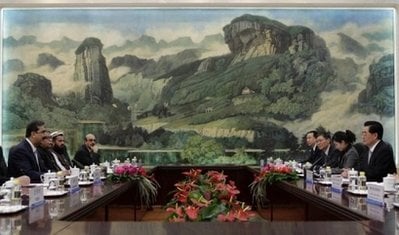By Mehmood-Ul-Hassan Khan
ABSTRACT
Socio-economic serious problems are gearing to bring changes in the status quo around the world. Tunisia, Egypt, Libya and Yemen are passing through difficult times for their national histories. Syria and Bahrain have been selected for proxy wars. Saudi Arabia is confronting with new troublesome events in some tiny parts/factions.
New bitter geo-political realities are emerging fast. New geo-political grouping and regrouping are making headlines in the international media. Struggle for socio-economic lion sharing, geo-political domination and the last but not the least, geo-strategic expansions are being fought on many visible, disguised and invisible fronts.
Power politics chessboard shapes new power of centers around the world. Things are not simple and straightforward looking rather things are complicated and complex but the countries which desire to avail opportunities from it must be socio-economically vigilant, geo-politically vibrant and geo-strategically visionary.
It is hoped that new bright prospects may change the fate of a country by increasing bilateral trade volumes and initiating joint ventures. It may protect a country’s territorial sovereignty by mutual security arrangements and closed political association. It would also protect a country’s strategic assets by having geo-strategic alliances. So, national survival, production process, societal development, soft power perception, commercial conformability may be guaranteed in the safe heavens of emerging centers of power in the world.
This research paper will examine the emerging socio-economic power houses around the world with special reference to Pakistan’s vested interests. China, Turkey, Uzbekistan, UAE, Qatar and Saudi Arabia are included for this comparative research study. Recommendations/suggestions will also be given to policy makers in the country to take maximum benefits from the emerging socio-economic, geo-political and geo-strategic scenarios.
This research may be useful for the students and teachers of economics, political science, international relation, and development journalism. It may also be beneficial for policy makers, think-tanks, and researchers.
INTRODUCTION
It seems that world is slowly but gradually moving from uni-polar to multi-polar system. Imperialism is fading and collective wisdom is prevailing around the globe. Financially dollar is at its lowest ebbs. Economically Euro is losing its strong grip. Yuan is making its inroads in the regional and international financial markets and monetary agencies as well.
Red dragon (China) is taking-off for universal socio-economic supremacy, geo-political clout and geo-strategic mileage. It sustained macro-economic indicators, vivacious society, judicious statesmanship and industrious middleclass are opening new fields of cooperation and collaboration. It foreign direct investments and joint ventures in Central Asia, African Sahara, Latin America, and Asia has labeled it centre of socio-economic gravity. Its active role in SCO, BRIC and G-7 is getting appreciation among the regional countries.
Crescent (Turkey) is becoming brighter and bigger in the regional socio-economic integration, geo-political alignment and the last but not the least international geo-strategic conflict resolution missions. It strong and stable macro-economy, dynamic society, harmonious political thoughts and counterproductive geo-strategic integrated policies have succeeded to win hearts and souls of many regional countries and confidence of international power brokers.
Eagle’s (United Arab Emirates) is flying above seven skies and has already achieved news standards of economic growth, efficacy, service and soft image in the region as well as world. Its economic onward march, societal liberalization and tolerant policies, geo-political insightfulness and rigorous persuasion in the conflict and peace judgments at international forums and organizations have given upper hand in the affairs of Gulf Cooperation Countries (GCC) and MENA (Middle East and Africa).
Galaxy of shinning stars (Uzbekistan) has become hope for many regional and developing countries. The success story of it reflects the importance of self-reliance, scrupulous commercial diplomacy and self-restraint. It shows the power of indigenous talent, collective wisdom, strong political commitment and above all conflict resolution. It verifies the strength of gradualism, rationalism and holistic approach in achieving robust socio-economic development and resolving conflicting realities of regional and international power politics.
Ancient Zubara (Qatar) has surpassed all faulty lines, barriers and succeeded to revolutionize its society, civility and economy. Diversified national economy, positive role in the settlement of regional contradictory issues relating to natural reservoirs, politics, and economy and the last but not the least balanced approach in the international affairs has strengthened its position.
Sword (Saudi Arabia) is ready to sway, preeminence and ever-ready to play a crucial deliberation in the regional as well as international power politics. It unified social fabrics, socio-economic prosperity, huge energy reservoirs and above all it sacred stature has made it ideal destination for cooperation, coordination and collaboration.
(a) People’s Republic China and Pakistan
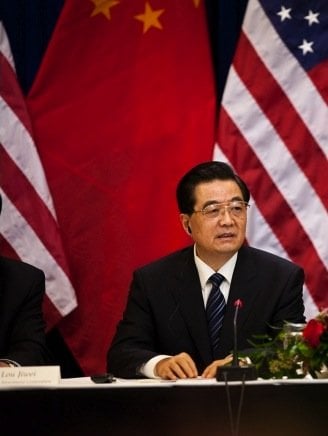
It is the famous saying of Napoleon Bonaparte that when China awakes, it will shake the world. Henry Kissinger also shares that once China becomes strong enough to stand alone, it might discard us. Both the statements were given long time ago which proved true afterwards.
Years GDP %
2009 8.7
2010 10.0
2011 9.0
Source: The Economist (2010)
According to Chinese officials its economy grew 10.3 percent in 2010, marking the fastest annual pace since the onset of the global crisis. Gross domestic product rose by 9.8 percent in the fourth quarter, accelerating from the previous quarter and exceeding analysts’ expectations, cementing China’s position as the world’s second-largest economy.
According to recent official figures of the Japanese government and the IMF (2011), China has surpassed Japan and succeeded to become world second largest economy after the US. The country of 1.4 billion souls has achieved it after three decades of spectacular socio-economic growth. During this period despite global economics recessions and financial crunches, China’s economy stood firm, stable and sustainable.
It verifies that China has been eclipsing Japan economically and now its GDP stand at US$5.879 trillion which is grater than Japan’s GDP US$5.474 trillion. Many international economists around the globe are forecasting that China will pass the United States as the world’s biggest economy as early as 2030. America’s gross domestic product was about $14 trillion in 2009.
Reshaping of Global Economic Order
In recent years, China has started to reshape the existing global economic order and system by virtue of its growing dominance of international trade, its huge deposits of foreign exchange reserves and United States government debt and its voracious appetite for oil, coal, iron ore and other natural resources.
The above given diagram indicates China’s leading trade partnership with many countries around the globe. China is already a major driver of global growth. China the new economic superpower has begun to assert greater influence in Asia, Africa and Latin America by promoting bilateral trade, investments and joint ventures of multibillion dollars.
Beijing’s Global Dominance
Beijing has also determination to shape global dialogues on a range of issues and it asserts that the dollar must be phased out as the world’s primary reserve currency. And while the United States and the European Union are struggling to grow in the wake of the worst economic crisis in decades, China has continued to climb up the economic league tables by investing heavily in infrastructure and backing a $586 billion stimulus plan in 2009-2010. According to the latest data of the World Bank (January, 2011), China’s economy is forecast to expand about 10 percent in 2011 continuing a remarkable three-decade streak of double-digit growth.
Washington-based institute Fair Assessment
According to the Washington-based institute for international economics in terms of purchasing power, China overtook the U.S. as the world’s largest economy in 2010. It further elaborated that in purchasing power parity (PPP) terms the size of China’s economy was U.S. $14.8 trillion in 2010, compared to the U.S. economy’s $14.6 trillion. It is now the world’s biggest auto market and the largest energy consumer.
Vast opportunities for Pakistan
Pakistan and China have jointly declared 2011 as “Pak-China friendship year” in recognition of 60 years of exemplary, all-weather friendship that has stood the test of time. Being the second largest economy of the world offers vast opportunities for the government and private sector in the country in the fields of energy, construction, agriculture and science and technology etc. China has already become the second leading economic partner of Pakistan and its entrepreneurs are making huge investments in the country. The Chashma power plants, heavy mechanical and electrical complexes and Gwadar deep sea port are the prime examples of Chinese huge investments in Pakistan.
Chinese Purposeful Engagements in Pakistan
Many Chinese companies were already involved in various projects in Pakistan. There were possibilities of active co-operation in the sectors of financing and banking, infrastructure, energy, information technology and telecom, chemicals, fertilizer, glass, polymers, textile manufacturing, engineering goods, textile machinery, automotives, agricultural implements, agriculture and agro based industry, food and fruits processing and packaging, livestock and dairy farming and pesticides. Similarly, relocation/mergers in a large number of complementary units are also possible.
Immediate Areas of Mutual Cooperation
Areas
Textiles and garments, leather and leather products, food processing, pharmaceutical, chemicals, capital, finance and insurance sector and tourism
Expected Cooperation
Sectors
Defence production, Reko-Diq Copper Mining project in Balochistan, energy generation, technology development, industrial base and software park building and communications infrastructure to promote ICT sector, including e-government, e-commerce and e-enterprise.
China’s Immediate Relief Package
It is strongly suggested that Beijing should relax non-tariff barriers and technical barriers to trade like standards and procedures need to be simplified for especially for Pakistan. Chinese private sector and enterprises should continuously conduct exchange and cooperation with Pakistan in the areas like project contracting out, labour, technology transfer, tourism, transportation sectors.
Pakistan’s Response
Government and private sector of Pakistan should pay more attention to the preparation work of investment projects, strengthen communication and exchange with chambers of commerce and industry and enterprises of relevant provinces of China. It must continuously improve the investment environment and give Chinese enterprises an equal treatment practically to protect the legal rights of Chinese enterprises and Chinese citizen.
Immediate Huge Projects
Areas Potential
Energy (Coal) The Chinese are keen to invest $10 to $15 billion for the development of power sector in Pakistan. Chinese companies could avail investment opportunities in Pakistan. Pakistan has around 175 billion tonnes of coal deposits in Thar.
Energy (Hydro) The projects of hydropower i.e. Kohala Hydro Power (1100 MW), Bhunji (7100 MW), Bhasha, Dashu in Upper Indus Valley, and other Hydro Power projects in lower Indus valley were thoroughly discussed most recently. China Three Gorges Project Corporation (CTGPC) signed an agreement with a private Pakistani firm, Associate Technologies (Private) Limited to invest $1.2 billion in 720 MW Karot Hydropower Project. The Karot project would be completed in four years and help Pakistan to overcome load-shedding problem.
Energy (Wind) China is all set to start construction of 50 MW wind power project in Jhampir (Sindh) and will complete in 2012. Furthermore it has also planned to install 2000 MW wind power.
Energy (Solar) China has also planned to invest in the 300 MW solar power projects in Pakistan.
Infrastructure Some Chinese companies have already shown interest in infrastructure development in Pakistan including construction of Karakorum Motorway and the Railways.
Bilateral Trade Volumes
The bilateral trade between the two countries was $6.8 billion in 2008, which was higher by 30 per cent as compared to the 2007. Bilateral trade volume in the first five months of 2010 increased by 31 percent and Pakistan’s exports to China grew by 72 percent, as compared to the same period 2009. It is expected that trade between Pakistan and China is likely to surge to $18 billion in the next 5 years.
($US million)
Year Exports Imports
2001-01 228.63 575.37
2002-03 244.59 839.00
2003-04 288.259 1,153.514
2004-05 354.092 1,842.270
2005-06 463.967 2,706.159
2006-07 575.903 3,533.794
2007-08 684.739 4691.813
Source: Federal board of statistics and WTO (2009).
According to the central bank of China (January, 2011) rose by $199 billion to $2.85 trillion, the biggest quarterly gain since 1996. Pakistan and China agreed to start currency swap which could be win-win situation for both the countries. Pakistan and China are strategic friends and now being the second largest economy of the world prospects are very bright to further strengthening of bilateral trade relations between the two countries in the days to come. The government of Pakistan must protect the Chinese interests as well as investments in the country. Joint ventures with China hold the key of success for Pakistan.
(b) The Republic of Turkey and Pakistan
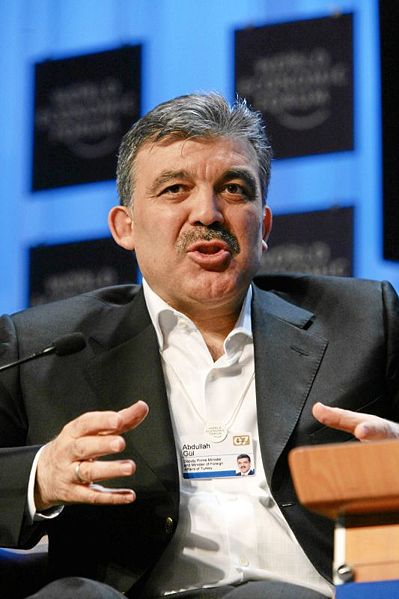
Indicators 2010 2011 2012
GDP % 6.8 4.5 4.2
Inflation 8.8 7.0 5.6
Exports 6.7 7.3 6.3
Imports 26.0 6.7 5.6
Source: The Economist (2010)
Islamabad and Ankara has established trustworthy relations. Nevertheless, the close ties between both the countries do not reflect in economic and trade sectors and it is the need of the hour that the two countries increased their cooperation in many integrated sectors to enhance trade volumes.
In recent times it has been decided to increase the bilateral trade volumes up to 1 billion U.S. dollars which was around 690 million USD in 2010. The government of Punjab has succeeded to make good connections with many private Turkish companies and now mutual cooperation in power and infrastructure sectors is being discussed.
Expected Mutual Cooperation/Sectors
Sectors
Energy, Railways, heavy industry, manufacturing, agriculture, food and construction.
Huge potential for Turkish investments
Punjab: Energy, different power projects. 300 places has been identified for hydel-power on 28 thousand kilometre long irrigation channels in Punjab where small projects of 10 to 20 megawatt could be started whereas Bahawalpur and DG Khan Divisions are most suitable for solar energy.
Dera Ghazi Khan: A project of 200 megawatt power to be generated through coal in Dera Ghazi Khan
Sindh: Different energy projects coal
Balochistan: Different energy projects coal
(c) Uzbekistan and Pakistan
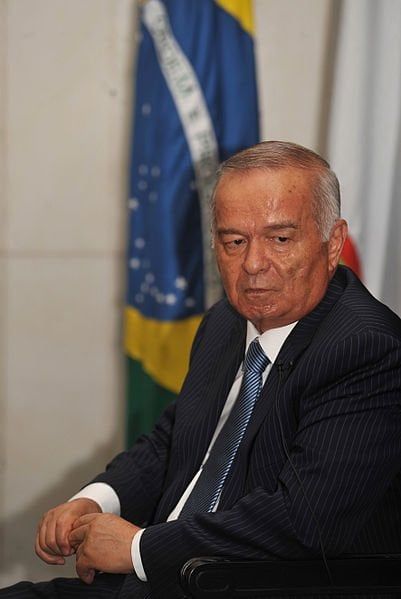
Uzbekistan is the largest populated country in the Central Independent States (CIS). It is also one of the fastest growing economies in the region. It succeeded to cope with the bad implications of the global economic meltdown and financial crunch by implementing its own rigorous macro-economic policies with a human face. It preferred economics over politics, national pride over personal taboos, liberalization over isolation and the last but not the least tolerance over prejudice in its diversified but integrated national policies, regional engagements and international commitments.
Selected Economic Indicators (2005-2009)
Economic Indicators 2005 2006 2007 2008 2009
GDP (%) 7.0 7.2 9.5 9.0 8.1
CPI Inflation (%) 10.0 14.2 12.3 12.7 12.5
Fiscal Balance (%) 1.2 5.2 5.1 10.5 9.4
Exports (%) 11.6 18.0 42.9 44.9 41.7
Imports (%) 8.1 16.0 49.2 31.0 25.8
Current a/c balance 14.3 17.2 19.1 16.7 12.0
Source: ADB & IMF (2010)
Since its independence the President of Uzbekistan Islam Karimov initiated more than 400 reforms/laws relating to free market’s development and economic liberalization and succeeded to achieve high rates of economic growth by pursuing its own unique model of economic development.
Salient Features
The salient features of its economic development model remained evolution, rationalism, gradualism and state-led transition. It avoided revolution and shock therapy due to which its economy mitigated the ills of emerging economies. The strong and stable macro-economic indicators guaranteed its territorial sovereignty, protected national hood survival, promoted political stability and facilitated societal sustainability of Uzbekistan.
Role Model for Developing Countries
The success of Uzbekistan’s economic model paves the way for many other developing countries to cope with the ongoing global economic recession and financial crunch. The purposeful accomplishment of market reforms, in-depth structural reforms of the economy, renewal and technical re-equipping of sectors and enterprises, establishment of new competitive export-bound industries, as well as development of business and private entrepreneurship paved the way of economic self-reliance in the region.
Socio-Economic Prosperity
Right from the beginning the government decided Uzbekistan not to follow the obsolete totalitarian, administrative-command and planning-distributive system and stick to phased and well planned transition and transformation of the socio-economy sphere of the country. Its GDP increased 3.5 times, per capita ratio grew 2.5 times, real incomes of population accounted 3.8 times, state expenses for social security grew 5 times, child and maternal mortality rates fell three and two-fold respectively, life expectancy of men climbed to 73 from 67 years, and to 75 years among women.
Social Development
Social development remained one of the main focuses of the government which ultimately increased the quality of life and encouraged gender equality. It rigorously institutionalized structural reforms which increased the economy’s competitiveness in the region. The constant policy of liberalisation supported the national economy and strengthened the banking and financial sector too.
Uzbekistan’s government initiated a multi-pronged strategy. It secured sustainable economic growth through increased employment opportunities and through improved income generation capacity of its people. It encouraged private investments by introducing many meaningful incentives and invested in important sectors. It introduced and followed a holistic approach to achieve comprehensive regional development and reduced societal and regional disparities throughout the country.
Effectiveness of Anti-crisis program
Anti-crisis program succeeded to mitigate bad effects of ongoing global economic crisis and financial crunch and achieved desired goals of socio-economic development. Uzbekistan achieved GDP growth rate 9 percent, 8.1 percent in 2009. It is further estimated to be 8.3 percent in 2011. Industrial production registered 9 percent, total investments increased 26 percent and the last but not the least, and foreign direct investments reached up to 68 percent. Foreign trade turnover increased more than 2.3 billion US dollars, the growth of average salary made-up 40 percent and real income 26.5 percent. Moreover, comparative study of the statistics of the last five years strong indicated that the annual GDP growth rate has been exceeding seven percent.
Rational Privatization
Uzbekistan’s government adopted a result-oriented privatisation policy which enhanced its macro-economy output. It did not offer its strategic assets in the privatisation process and followed the ancient philosophy of survival that promotes the principle of keeping your old assets until you have new ones. In this connection, the Law “On denationalization and privatization” will definitely attract potential foreigner buyers which could open the way of joint ventures, and inflows of FDI and FPI in the country. It will also improve the levels of services, profitability, production patterns and above all generate such needed employment. In Uzbekistan, through the rigorous implementation of the market reforms it now allows free and fair competition under a free market mechanism and continuity of economic policies.
Unique System of Domestic Investments
Uzbekistan has its own unique workable system of domestic investments. The government has instructed all the corporations, factories, institutions and other related organs to make compulsory investments out of their profits on regular bases. This system is now paying the dividends. The vast network of small and medium industries and industrial projects are being established on the public-private partnership basis. In Pakistan, the business tycoons are heavily involved in capital flight and are not ready to reinvest in the country.
Domestic Savings
Domestic savings play a very important role in the socio-economy of any country and Uzbekistan is not any exemption. The government introduced many reforms and incentives for the mobilization of local savings. 100 percent guarantee has been given to the all population’s deposits in commercial banks. For 2008 the volume of the involved money resources of the population in bank contributions has increased for 50.7 percent and for January, 1st, 2009 has made 5771.6 billion Soums. The bank contributions of the population have grown up to 69 percent and for January, 1st, 2009 have reached 17238 billion Soums. Cumulative current liquidity of banking system is worth of US$1.5 billion which is ten times greater than on the account of non-state foreign account payments.
Potential Areas of Mutual Cooperation
Areas
Petro-Chemical, fish and food processing, heavy engineering, metal work, steel products, garments, steel products, industrial complex, agriculture, transportation, telecommunication, construction, public health, tourism, mineral exploration, oil & gas
(d) United Arab Emirates and Pakistan
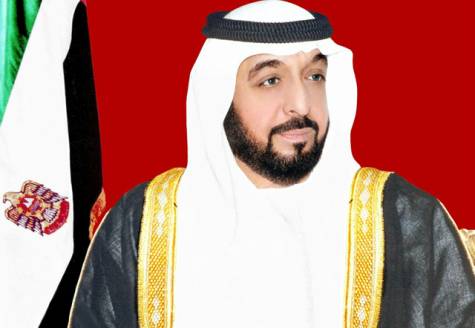
In the times of global economic recession and financial crunch the government of the UAE stood firm and strong and initiated long term policies to mitigate the bad spillovers of it. Now due to constant policy persuasion it economy has become more resilient and diversified.
The United Arab Emirates GDP crossed Dh1 trillion mark in 2010 due to rigorous diversification of macro-economy, rapid industrialization, small and medium enterprises contributory role, infrastructure, trade, service sector and tourism. The IMF predicts that the UAE’s economy will grow at a pace of around 4 percent in 2011 and next on the back of big infrastructure projects.
The UAE is the world’s third-largest oil exporter. According to the central bank of the UAE its banking system had weathered the financial crisis well as total assets to liabilities grew 4.2 percent to AED1.5 trillion. Moreover, assets and liabilities of Islamic banks in the UAE grew 6.5 percent in 2009, deposits grew 9.5 percent, while loans and advances rose about 5.5 percent. In 2011, the non-oil sector is projected to recover by nearly 3.7 per cent and accelerate by about 4.1 per cent in 2012.
Pakistan and the United Arab Emirates enjoy privileged relations at all political, economic and social levels. According to the UAE Foreign Aid Report (2009), the UAE government and Emirati donor organisations gave about Dh 9 billion (US$2.45bn ) in foreign aid in 2009.
Trade Volumes
The UAE is Pakistan’s second largest global trading partner and it is also the second largest source of home remittances from Pakistani expatriates.
Imports-Exports
($ million)
Year/ Period Imports Exports
1999-2000 907,588 492,710
2000-01 1,336,902 625,905
2001-02 1,353,940 727,474
2002-03 1,509,635 1,039,168
Change % 42.5 11.50
2003-04 942,913 1,708,688
Change % 13.19 9.26
2004-05 1,095,485 1,703,131
Change % 16.18 10.33
2005-06 3,405,563 1,312,757
Change % 19.83 99.96
2006-07 2,769,091 1,385,082
Change % 5.51 18.69
2007-08 3,413,527 2,070,953
Change % 49.52 23.27
2008-09 3,159,742 1,469,990
Change % 29.02 43
Source: State Bank of Pakistan & Board of Investment
Imports-Exports commodities
According to the Federation of Pakistan Chambers of Commerce and Industry (FPCCI), the increase in overall exports from Pakistan has come primarily from non-traditional exports items accounting for 67 percent of the increase followed by 35 percent from textile manufacturers and four percent from other manufacturers.
Country Exports to Pakistan
UAE Petroleum, petrochemical products, iron ore, scrap-plastics, chemical products, non-ferrous metals-machines, spare parts of cars ships and boats
Imports from UAE
Nylon textiles, silk & wool, rice, cotton, crochet-dye, textile-treatment requirements of fabrics and clothes, towels, marble and surgical instruments
Source: FPCCI (August, 2010)
Foreign Direct Investments
According to the data of SBP and BOI, the UAE is also one of the biggest investor in Pakistan. Pakistan has tremendous opportunities for investment in the core infrastructure development; electricity generation, or water desalination, technology for agricultural sector.
The comparative statistical analysis, shows that inflows of FDIs is going higher and higher with the passage of every year. It was $228.6 million in 2008-2009 which reached to $248.6 million in the fiscal year 2009-2010. The portion of private sector’s investment is on the decline which needs to be revised. Respective chambers of commerce, Pak-UAE Business Council and person-to-person contact could be useful to boost further the trade volumes.
($ million)
2009-2010 (July-June)
Country Direct Private Public Total
UAE 243.1 5.5 – 248.6
2008-2009(July-June)
Country Direct Private Public Total
UAE 178.1 49.9 – 228.0
Source: SBP
The year-wise comparison indicates that pace and scope of UAE’s FDIs is on the rise which should be tapped for the stability and sustainability of Pakistan’s macro-economy. More business, people and investment’s friendly policies would be instrumental to achieve greater inflows of FDIs from UAE.
($ million)
Year/Period Amount
2000-01 5.2
2001-02 21.5
2002-03 119.7
2003-04 134.6
2004-05 367.5
2005-06 1,424.5
2006-07 661.5
2007-08 589.2
2008-09 178.1
2009-2010 243.1
Source: SBP & BOI
Country Potential sectors of investments
UAE Energy, construction, telecommunication, oil & gas exploration, insurance, banking, aviation, food packaging, hotels and agricultural equipment
According to the latest figures of the BOI, the total investment so far has reached $20 billion dollars. The Government of Pakistan has invited UAE’s public and private sectors to invest in energy sector, airline and infrastructure. Investments in agriculture, agro-based industries and hydro-power generation may also be beneficial to both the countries.
UAE Private Companies in Pakistan
The following table indicates that many big private companies of UAE are working in Pakistan and contributing good things in many sectors of the macro-economy.
Sectors Names of the companies
Telecommunication Etisalat, Warid, Wateen and U-phone
Banking Bank Al Falah under Abu Dhabi Group, Dubai Islamic Bank, Emirates Global Islamic Bank
Real Estate Emaar Properties Group, Al-Ghurair Giga and Al Habtour Trading Enterprises, Bahria Emirates, DAMAC and Al-Ghuran
Airlines Etihad Airways , Emirates Airlines and FlyDubai
Insurance Al-Falah Insurance Company, Emirates Investments Group, which owns Emirates Global Islamic Bank have plans to invest in the insurance sector namely Takaful Pakistan Limited and in the real estate project of Karachi Financial Towers.
Joint Ventures
Areas
Petroleum and petroleum products, aluminum products, agriculture (horticulture, corporate agricultural farming, dairy farming and livestock), financial sector, housing (prefabricated houses and affordable low income houses) and power.
It is strongly recommended that the two countries can consider cooperation in the fields of education, alternative energy resources i.e. solar, wind, and geothermal, /alternative energy resources i.e. solar, wind, geothermal, food security, dairy development and agro-based industries.
(e) Qatar and Pakistan
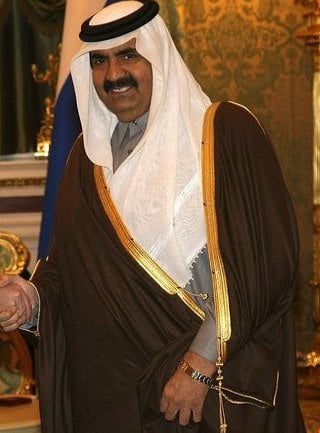
Qatar was the fastest growing economy in the 2009. It is performing extraordinary in 2010-11 too. Bolstered by rising production of LNG and associated natural gas liquids, the Qatari economy has been able to ride out the global economic storm and post real GDP growth of an estimated 9.4 percent in 2009. This is projected to accelerate to 18 percent and 13 percent in 2010-11.
With increasing revenue flows from hydrocarbon exports and immediate access to around $10 billion in funds raised through sovereign bond issues during 2009, the government is well placed to advance its development and diversification agenda during 2010-11. The current account balance is expected to record a similar trend with surpluses rising back to over 20 percent of GDP in 2010-11.
Selected economic indicators
Indicators 2009 2010 FY 2011 FY
Nominal GDP ($ bn) 85.0 115.9 134.6
Real GDP (% change) 9.4 18.1 13.3
Hydrocarbon GDP 12.8 25.6 16.8
Non- Hydrocarbon GDP 6.1 10.0 9.1
CPI Inflation -4.0 3.5 6.0
Hydrocarbon Exports 44.2 64.3 80.8
Current a/c balance % 9.7 21.8 27.4
Source: IIF, Central Bank Samba
According to IMF estimates Qatar is expected to continue posting double digit growth in 2010 and 2011 Nominal GDP of 29 per cent and 25 per cent, respectively, It is expected to post the highest growth rate in the GCC region supported by the 5 year QAR 100 bn ($27.5bn) government stimulus plan which will maintain high levels of capital spending on education, health and transport.
Economic fundamentals for Qatar seem promising placing it at the highest ranking among its GCC peers in terms of growth levels in 2010-2011. Looking forward, solid hydrocarbon prices coupled with the robust growth in the credit market will help sustain positive growth levels and provide momentum to the economy in the medium term. It is predicted that the banking sector will remain profitable and well capitalized, and will show resilience to further financial turbulence that might happen in the medium term, supported by the regulatory authorities’ prudent policies and commitment to provide banks with liquidity to contain potential financial risks and maintain the stability of the financial system. The Capital Adequacy Ratio (CAR) for the Qatari banks improved to 16.1 per cent in 2009 up from 15.5 per cent in 2008.
Country Exports to Pakistan
Qatar Liquefied natural gas and crude oil, petrochemical products
Exports to Qatar
Pakistan Rice, fish, cotton, fabrics, leather garments, fruits and vegetables
(f) Saudi Arabia and Pakistan
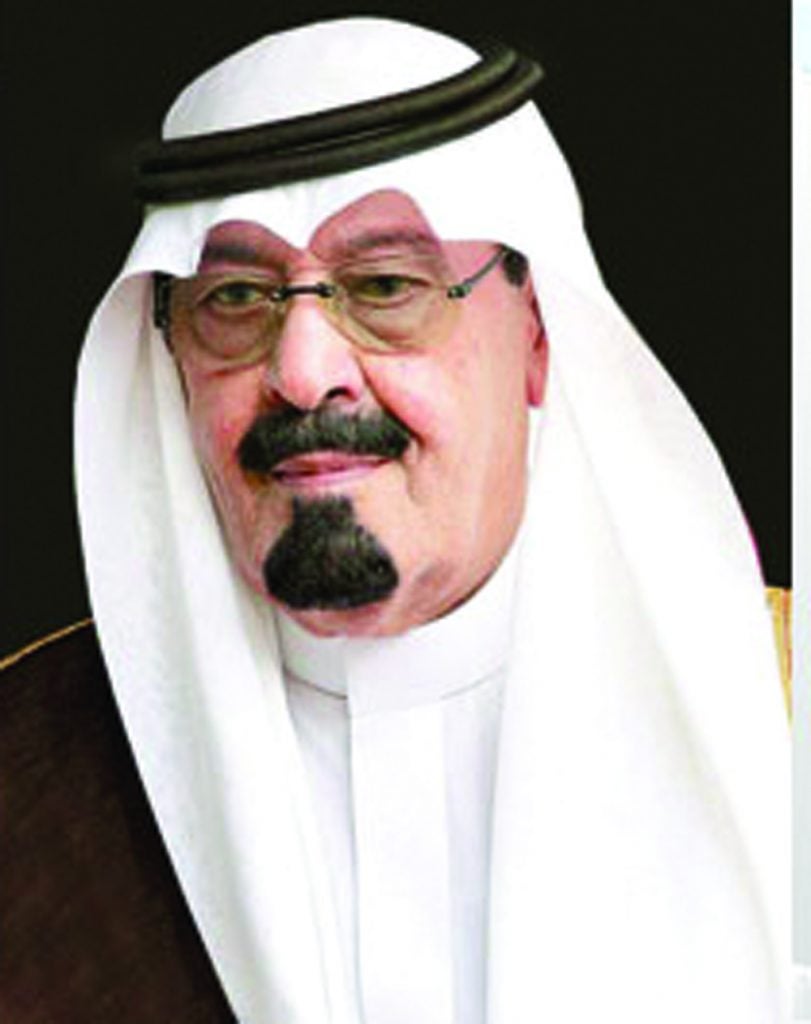
Saudi Arabia is interested in investing in Pakistan’s energy and agriculture sectors. Pakistan has very close and longstanding relationship with Saudi Arabia.
According to the official reports Saudi Arabia’s economy rebounded by nearly 3.8 per cent in real terms last year following an improvement in crude prices and massive government spending as part of counter-crisis fiscal measures. The nominal economy jumped by around 16.6 per cent following a contraction of more than 20 per cent in 2009.
Now Saudi Arabia’s nominal GDP stand at SR1,630 billion in 2010, the largest Arab economy, accounting for more than a fifth of the combined GDP of the 21 Arab nations. It projected nominal GDP to gain around SR107bn to reach SR1,737bn in 2011 and continue its climb to peak at nearly SR1,864bn in 2012. The report expected real GDP to pick up by around 4.2 per cent in 2011 and 4.5 per cent in 2012.
Country Exports to Pakistan
Saudi Arabia Petroleum, petrochemical products, spare parts of cars ships and boats
Exports to Saudi Arabia
Pakistan Raw cotton, cotton yarn, cotton cloth, readymade garments, knitwear (hosiery), bed linen, towels, tents and canvas, art silk and synthetic textiles, leather garments, furniture, carpets and rugs, footwear, sports goods and surgical goods, rice, fish, fruits, vegetables, spices, biscuits, jams, juices
Saudi Arabian Investments in Pakistan
Country Sectors
Saudi Arabia Steel & real estate projects, banking, welfare projects of health, education
Recommendations/Suggestions
(a) Chinese rigorous commercial diplomacy at SCO, DAVOS, BRIC, G-7 OR G-20 may be useful for Pakistan in order to achieve its desired socio-economic goals. It is strongly recommended that Pakistan and China must further strengthen its bilateral socio-economic relations and initiate massive energy cooperation for the benefits of both the countries. Both the countries should also enhance defence cooperation and meaningful security pacts must also be concluded. Banking and financial cooperation is the need of the hour between the two countries.
(b) Turkey’s emerging regional power stature in the Middle East and mediator in many serious geo-political and geo-strategic issues of Iranian nuclear program and peace in Afghanistan would be beneficial for Pakistan to achieve and protect its vested interests in Afghanistan MEAN. Pakistan and Turkey should increase bilateral trade volumes and start purposeful joint ventures in many wind, solar and infrastructure projects.
(c) Being the largest populated country in the CIS, Uzbekistan’s proactive role in conflict resolution in the region especially towards bringing peace in Afghanistan i.e. 6+3 Formula and its huge reservoirs of gas, minerals must be tapped by the government and private sector of Pakistan. Uzbekistan would be useful for Pakistan for its trade and economic and energy cooperation with the rest of CIS.
(d) United Arab Emirates has become icon of production, re-exports, tourism, FDI, corporate sector. Its active engagements and commitments to uphold peace in the Middle East, and other parts of the world are appreciable. Its tremendous socio-economic development, huge renewable energy projects, real estate programs, mega infrastructure plans and above all humanitarian activities are providing ideal opportunities for Pakistan to excel and avail. Keeping in view the rapidly changing geo-political and geo-strategic scenarios it would be better for both the countries to enhance its defence, security and administrative law department’s cooperation and collaboration. Extended cooperation in the fields of education, renewable energy, science and technology and corporate sector is urgently needed.
(e) Qatar being one of the fastest developing economies in the world, its continued equalizer participation in many regional and international geo-political and geo-strategic issues, its huge oil & gas reservoirs, LPG and financial surplus stress the need to have closer relations with Pakistan. Pakistan would be useful for its security apparatus and ongoing socio-economic prosperity. Energy and security cooperation is the need of the hour.
(f) Saudi Arabia being the largest exports of energy reservoirs with having lots of financial surplus and strong commitments towards humanitarian projects in Pakistan must need proactive bilateral relations with Pakistan in defence, security, energy, construction and HRM.
